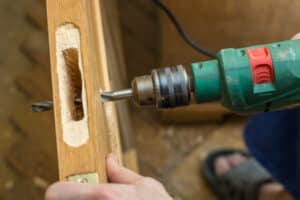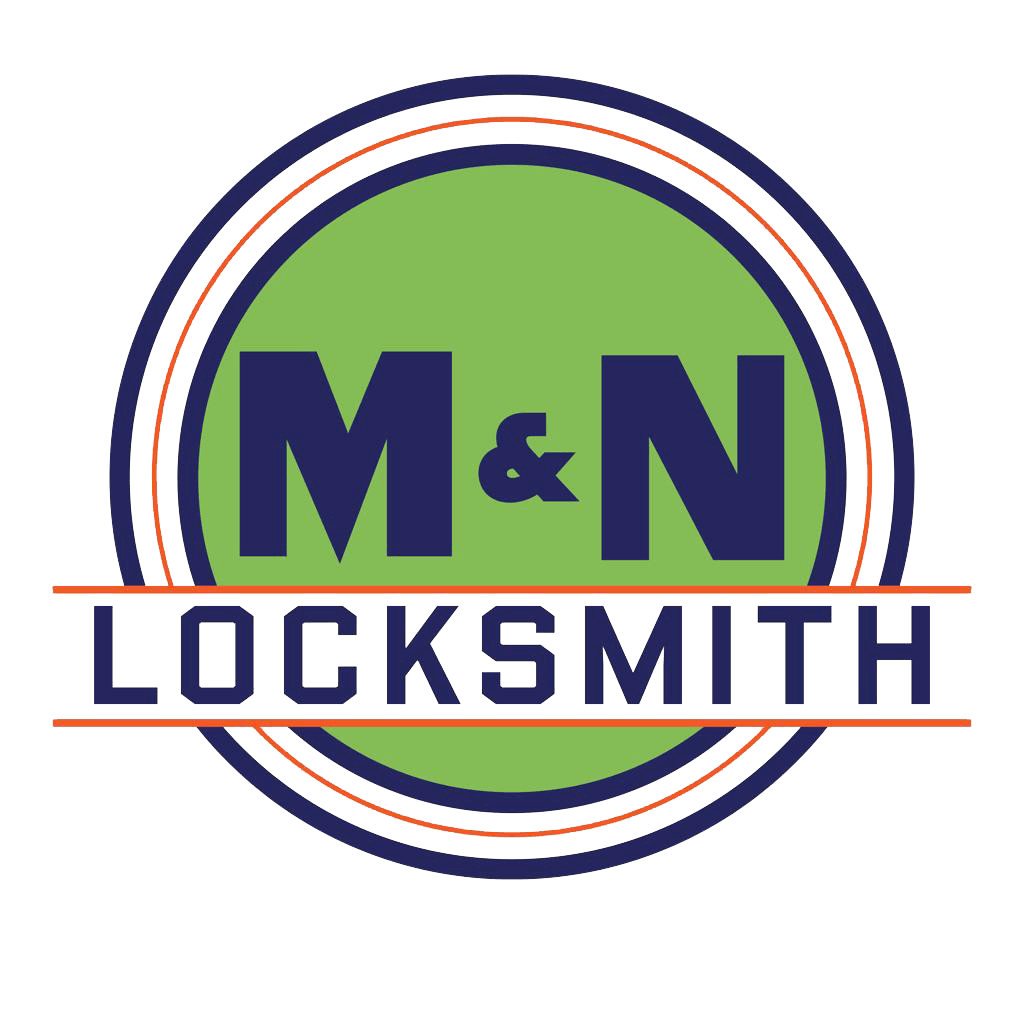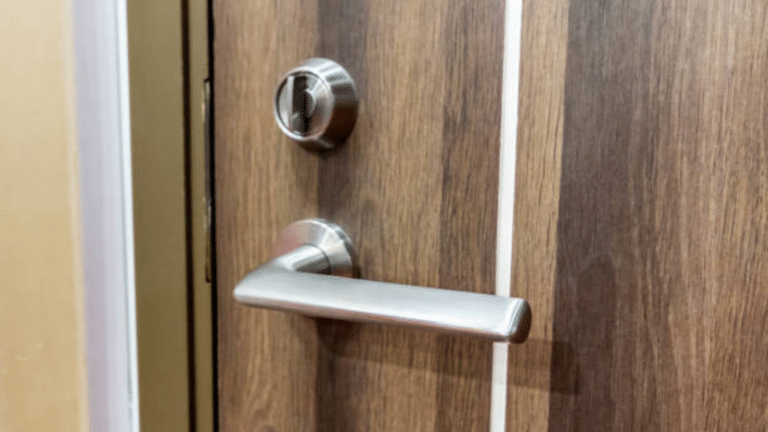If you have ever wondered how you can make your doors sure, chances are that you have come across the term ‘mortise lock.’ However, what exactly is a mortise lock and how does it work? In this comprehensive guide, we will unravel the mystery behind mortise locks and explore their various aspects listed below;
- What Mortise Lock Is?
- The Functionality
- Parts of a Mortise Lock
- Advantages of Using a Mortise Lock
- Common Applications of Mortise Locks
- Differences Between Mortise Locks And Other Types Of Locks
- Choosing the Right Mortise Lock for Your Needs
- Hiring a Professional Locksmith for Mortise Lock Installation
- Maintaining and Troubleshooting Mortise Locks
What is a Mortise Lock?
A mortise lock is a type of lock widely used in residential, commercial, and industrial applications. Unlike other locks that are surface mounted, a mortise lock is fitted into the door itself making it more secure and durable as it were. The word ‘mortise’ refers to the cavity or recess that is created at the edge of the door to accommodate the lock body.
How Does a Mortise Lock Work?
Now that we know what a mortise lock is let’s dwell deeper on its functioning. A mortised lock consists of several components working together to provide safety measures and functionality. The main elements of any mortised locks include a door frame attached locking device, cylinder mechanism with spring-loaded pins or wafers inside each chamber; bolt assembly (movable part) which includes a bolt carrier tube secured through two arms via springs located within these hollow sections acting upon each other acting upon each other simultaneously;
When one inserts his key into this kind of lock and subsequently turns it, the cylindrical section rotates forcing the cam located within the engaged tailpiece thus retracting the latch bolt enabling anyone to open the doorway easily. Surface-mounted locks do not compare favorably with those locked using an embedding position they assume on the door since this makes them suffer from forced entry more frequently than their counterparts.
Parts of a Mortise Lock
To understand how a mortise lock functions it becomes necessary therefore for us to familiarize ourselves with its different parts. Here are some of the main components that make up a mortise lock.
Lock Body
This is the main part of the lock where all its internal parts are housed; it is fitted into the door and forms a base for this mechanism.
Lock Cylinder
A cylinder containing a key can be rotated to turn on a lock; it’s inserted inside a lock body and may be changed or rekeyed whenever necessary.
Latch Bolt
The latch bolt is the part of the lock that extends into the door jamb, keeping the door securely closed when in the locked position. It can be manual or automatic depending on the particular model of mortised locks they have.
Strike Plate
The strike plate is installed on the door jamb and provides a surface for the latch bolt to strike against when the door is closed. Its function is ensuring tight closure hence preventing forced entry through doors.
Trim
This refers to any external portion of your mortise lock such as a doorknob, lever handle, thumb turn, etc., which you operate from outside or inside your house through it.
Advantages of Using a Mortise Lock
Now that we know how a mortise lock works as well as its different parts let us discuss why we would prefer using this kind of locking mechanism instead:
- High Security: One major advantage of having mortise locks in place is their being highly secure. It’s built deep into one’s door with complex interior mechanisms making it very difficult to pick them thus becoming more resistant against picking bumping or even break-ins caused by unauthorized access.
- Durability: Mortise locks are known for their durability and longevity. With robust construction and quality materials, they can be used heavily over long periods.
- Aesthetics: Mortise locks are not just valuable in terms of practicality but also good-looking. These come in a variety of designs and finishes which allows you to choose a lock that will match the overall theme of your home or office.
Common Applications of Mortise Locks
Due to their security features and reliability, there is widespread usage of mortise locks. Here are some examples of why most people opt for mortise locks:
- Residential Properties: Most homes use mortise locks on their front doors as well as interior doors. They provide improved safety and last longer guarding against any forced entry attempt.
- Commercial Buildings: Offices, retail stores, and other commercial spaces typically have mortise locks fitted in them. Their security features are top notch and they can sustain heavy-duty usage.
- Institutional Settings: Mortise locks form part of the security protocol in schools, hospitals, government offices, and other public places.
Differences Between Mortise Locks And Other Types Of Locks
While highlighting the benefits of these products is important, it is equally important to know how they differ from others in the market. Here are a few differences:
- Mortise Locks Vs Cylinder Locks: Unlike cylinder locks which appear on the door surface; mortice lock installation involves having it inside the door itself therefore making it safer to break into.
- Mortice Lock Vs Deadbolt Locks: Latch bolts plus auto-lock mechanisms among other things make these types more than secure while Deadbolt comes out with simplicity only.
- Mortice Lock Vs Rim Locks: The main difference here lies between its attachment to either side thus being built into versus lying on top respectively; that defines how each one works or operates when we consider how soundly secure either type could be relative to another one.
Choosing the Right Mortise Lock for Your Needs
Several things need to be put into consideration when one is planning to buy a mortise lock. Consider these factors:
- Security Requirements: Consider the level of security required for your specific application. Think about location, crime rates, and how much the property is worth.
- Functionality: Identify which particular functions you would like to see in a mortice lock. If you are interested in automatic locking, then an electronic mortice lock might serve you best.
- Aesthetic Appeal: Choose a mortise lock that matches your door’s overall style and design. Some different finishes and designs will meet different customer’s needs.
Hiring a Professional Locksmith for Mortise Lock Installation

While some may want to try installing a mortice lock alone, it is advisable to involve an expert locksmith in doing this. This person has good knowledge of fitting them well and making sure they work properly too. Additionally, they can advise on which type of mortice lock suits your budget and preferences as well as provide recommendations.
Maintaining and Troubleshooting Mortise Locks
Frequent maintenance is required to keep your mortice locked in good condition at all times. The following tips will help you maintain or handle any problems with your mortice locks:
Lubrication
Use a tiny amount of lubricant on the lock cylinder and other mechanical parts to ensure that it operates smoothly. Graphite-based lubricants should not be used as they can build up, blocking its functioning.
Cleaning
Regularly clean the lock and its components to remove any dirt or debris that could affect performance. Wipe surfaces gently using a mild detergent-soaked cloth.
Troubleshooting
If you have any problem with your mortise lock such as a sticking latch or key getting jammed, it is better to consult a professional locksmith. Trying to fix the problem may lead to more damage.
Conclusion
Finally, a mortise lock is a type of very secure and long-lasting kind of lock fitted in the door itself. Mortise locks’ strong construction and intricate internal mechanism improve security levels thus protecting against forced entries. In residential commercial and institutional settings, mortise locks are well known for their functionality as well as good looks at the same time. When selecting a mortise lock, consider factors such as security requirements, functionality, and design among others. A professional locksmith should be hired for proper installation, maintenance, and troubleshooting activities concerning the mortise locks themselves. Installing a mortise lock requires specialized skills that one cannot perform on his own. By understanding how much goes into putting together quality mortise locks you help protect your properties from burglars.
Frequently Asked Questions
1. How long does it take to install a mortise lock?
The length of installation time will depend on the type of door being installed or replaced by this particular kind of locking system and also the experience level of an expert who will be doing the work; typically thirty minutes up to one hour.
2. Can I install my mortise lock by myself?
Even though it is possible for someone with no experience in installing locks can install a mortising lock on their own locksmiths’ services are highly recommended. This is because they have the necessary skills and tools to ensure that the lock is installed properly for it to work as expected.
3. Can a mortise lock be rekeyed?
Certainly, in some situations, one might want to rekey a mortise which means changing the key that unlocks them. The process of re-keying your mortise lock can be done by qualified professional locksmiths.
4. Are mortise locks more secure than other types of locks?
This they are because they are deeply set into doors and contain many parts inside them.
5. How often should I lubricate my mortise lock?
It is advisable to keep lubricating your mortise locks at least once per year or when you notice its stiffness or feel difficulty in turning the key itself.


